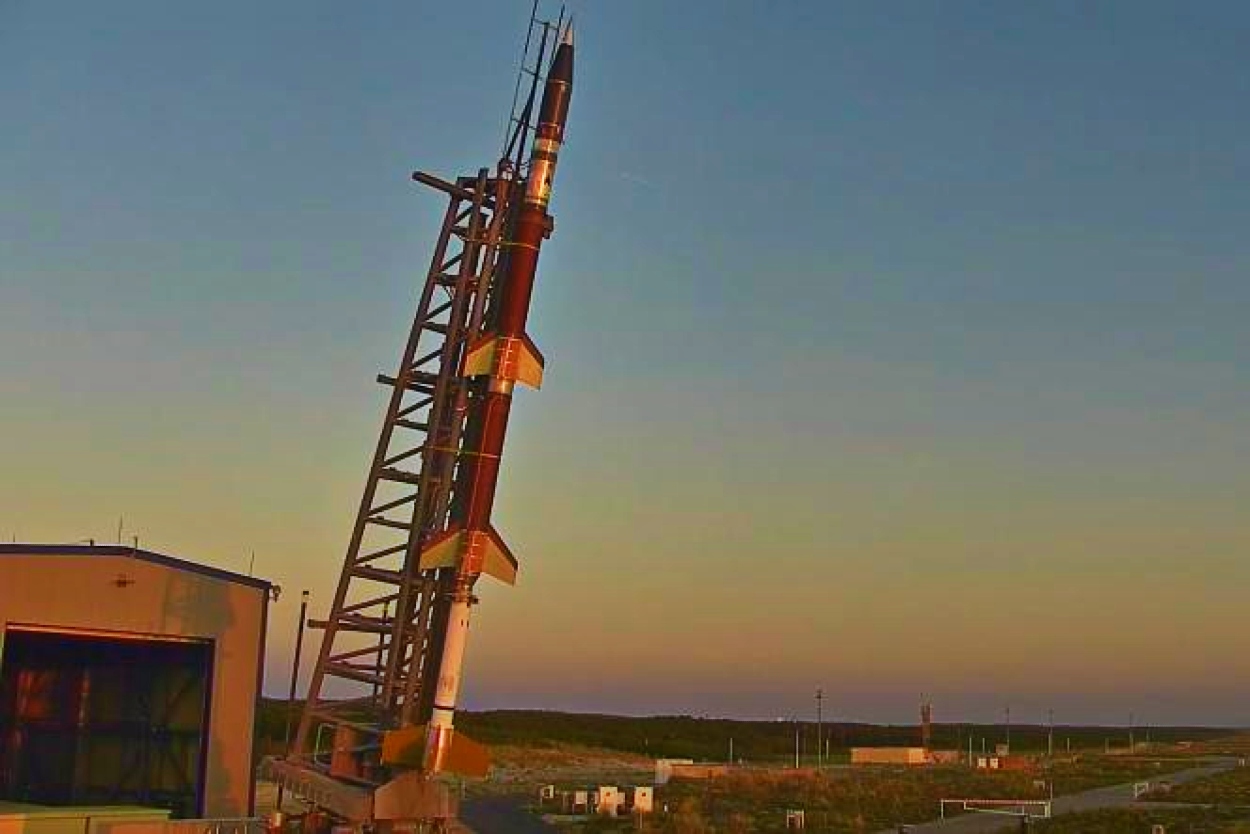France recently became the second Western country after the US trying to develop the highly complex hypersonic missile technology with the test of the VMaX platform.
China’s-20 Stealth Fighter Zooms With Indigenous, Powerful WS-15 Engine For The Very First Time – Reports
However, the weapon is far from being operational. It will need a few years of testing, as reflected in the French government’s official reaction and the West’s general late start and lag in hypersonic technology.
Russia and China admittedly lead in these weapons and have fielded operational platforms. With the US still struggling to start developing hypersonic weapons after commencing its programs a few years ago, France has begun just now, which means it even lags Washington.
The French Test
A Reuters report said the test involved a “sounding rocket” carrying a “VMaX hypersonic glider launched on Monday from the Biscarrosse missile test site on the Bay of Biscay, southwestern France.”
Being lifted into the atmosphere’s edge by another rocket means the French weapon is essentially a Hypersonic Glide Vehicle (HGV), a type of hypersonic missile from among two primary categories.
“Its flight test, on a very demanding long-range trajectory, represented an unprecedented technical challenge that will pave the way for the future of our national hypervelocity roadmap,” a statement from the French defense ministry said.

It gave no details on the outcome of the test but said an analysis of data collected during the trial was underway. In 2019, France contracted aerospace company ArianeGroup to manage the VMaX program that involved developing a hypersonic glider demonstrator.
Types Of Hypersonic Missiles
A supersonic combustion ramjet (or scramjet) is a hypersonic missile that maintains continuous thrust in the atmosphere throughout the flight.
Unlike the conventional ramjet, in which the air enters the combustion chamber at a subsonic speed, for scramjets to work, the air has to enter the intakes only at supersonic speeds.
The missile must first be accelerated to supersonic speed to ignite the scramjet. This entails the weapon having to fly at a fixed altitude during most of its journey since the scramjet combustion chamber is optimized for a specific flight profile. Its trajectory and path are consequently more predictable and detectable, giving a higher chance of interception.
An aero-ballistic missile is a second type of hypersonic weapon that is dropped from an aircraft, accelerated to hypersonic speed using a rocket, and follows a ballistic trajectory. Russia’s Kh-47M2 Kinzhal belongs to this category.
Ukraine, in mid-May, claimed it intercepted a Kinzhal using a US-made Patriot missile system earlier that month. While no conclusive evidence verified the kill, it still largely proved that air-breathing hypersonic cruise missiles offer a significant chance of being intercepted.

However, experts also point out that the current generation of surface-to-air missiles (SAM) and their accompanying surveillance and tracking radars are not specifically designed for hypersonic projectiles. Any shoot-downs with the present air-defense technology will need painstaking technical skill and planning.
Only newer forms of radars, sensors, missile propulsion, and highly advanced algorithms and software specifically designed for the purpose can shoot down hypersonic systems.
A third type of hypersonic technology involves launching a glider from a ballistic missile during its ascending phase, then piloting this device to “bounce” off the layers of the atmosphere to extend its range and change direction. The ‘Glide’ in the Hypersonic Glide Vehicle (HGV) comes from this particular mode of operation.
France’s VMaX demonstrator belongs to this third category. China’s DF-ZF and Russia’s Avangard are two others. While the Avangard is launched by an R-36M2 and RS-28 Sarmat heavy Intercontinental Ballistic Missiles (ICBM), the DF-ZF is launched by a DF-17 ballistic missile, specifically designed to carry HGVs.
The US AGM-183 Air-Launched Rapid Response Weapon (ARRW) developed by Lockheed Martin is another example, but that project was canceled in March 2023 following a series of failed tests.
The gliding and bouncing off the Earth’s atmosphere gives the missile a trajectory that is very complex to predict but also leads to very high mechanical and thermal stresses on the terminal vehicle. The formation of charged plasma particles on the vehicle’s surface owing to the extreme heat and friction with the Earth’s atmosphere, which often causes a communications blackout, is one problem.
Its range and final speed will depend on the initial thrust and then the profile of its kinetic energy degradation as it bounces off the layers of the atmosphere. Like Maneuverable Reentry Vehicles (MaRV) from ballistic missiles, the terminal velocity of the glider will be greatly reduced from the initial Mach 20, even potentially below Mach 5.
Too Early To Celebrate – France Had Just Begun
For one, the French system is still far from operational and is being called a “technology demonstrator” by the French government itself. “Technical analysis of the numerous data collected throughout the duration of the test is underway to draw lessons for the rest of the experimental flights,” the French military statement said.

This is similar to India’s Hypersonic Scramjet Test Demonstrator Vehicle (HSTDV), which India tested on September 7, 2020. The DRDO statement said the “data collected would be used to validate critical technologies.” These were “fuel injection and auto ignition” that “demonstrated technological maturity.”
The assessment of the ARRW’s failure, too, was concluded to be a lack of testing of the critical systems and subsystems that can help scientists understand the complicated and tedious physics behind the technology.
Mark Lewis, head of the National Defense Industrial Association’s (NDIA) Emerging Technologies Institute (ETI) and a national expert in hypersonics, had appealed for the program not to be shut just owing to a few failures, which he said were natural, suggesting they are eventually overcome with ongoing trials and data crunching.
“I think people underestimate how hard it is to build a tactical-scale rocket/boost-glide system. (Moreover, in weapons programs), there are noble failures when things don’t work because you genuinely didn’t understand the physics; you made a mistake in engineering, but it’s all good because you needed to learn more. And there are stupid failures, where the fin falls off, the booster doesn’t light, or whatever. I hope we wouldn’t cancel something because of a stupid failure,” he said.
Lastly, European and American defense and manufacturing industries have faced massive supply chain tensions, especially post-Covid. US manufacturing has generally declined over the last two decades, while the European industry still struggles to source many smaller components and parts from other international suppliers.
A part of the reason has also been sourcing raw materials like steel from Russia, which it has heavily sanctioned. The sanctions over buying energy from Moscow have led to its own set of industrial functioning issues since factories cannot run without electricity.
- The author can be reached at satamp@gmail.com
- Follow EurAsian Times on Google News




